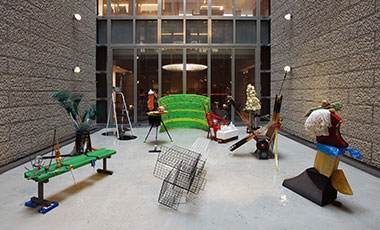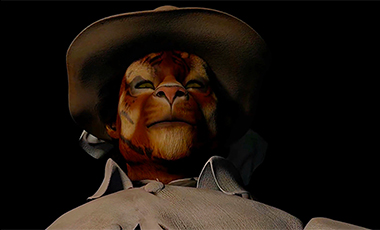In the NovemberArt Talk, we review the 《Deoksugung Project》 (2012.9.19.~12.2, Deoksugung Palace), which has brought a nation-wide sensation through the encounter between Deoksugung and Korean contemporary art. At every place in Deoksugung which has various time layers as a historical site, this art project exhibits various works of Korean contemporary art by diverse creators from diverse fields such as artists, dancers, and so on. As far as the Art Talk is a comer that proposes diverse points of view through cross-criticisms by diverse experts from various fields, we reviewed this project and art works this time with peculiar aspects of diverse critics of various fields, including the curator of the project.
《Deoksugung Project》: Contemporary Interpretation on Legacy
Until the Planning of the Project
《Deoksugung Project》 was opened at the precincts of the palace as well as the inside of the museum last September 19th. Having attracted media attentions before its opening, the project received so much interests and loves from the viewers astonishingly beyond the curator’s expectation; One museum-goer greeted us with warm “Thanks” for providing such a project; Various international presses from Uruguay, Ukraine, Russia, Egypt and India asked us for interviews while various international viewers from England, Canada, Japan, United States, Singapore and Belgium watched the exhibition and wanted to meet with the curator. Even though we expected that the Deoksugung Palace would be a ‘diplomatic’ field of Korea when such a project would be held, the fruit was in fact completely beyond our anticipation. Later, I happened to reproach myself why we have neglected or failed to utilize Korea’s abundant cultural assets so far. Even the management office of Deoksugung suggested us that they wish the project’s regular opening every year instead of being finished as a single program.
There had been merely a trifling contemplation of daily life at the beginning, as everything is all about, until we reached such a surprising result. While enjoying walking around all the spots inside of the palace everyday as a curator of the Deoksugung Museum for about 7-8 years, I started to bear a wish in mind that more people should recognize the value of this beautiful palace. It presented me a special experience if I entered into a perfectly new world through the Daehanmun Gate, being located at the center of town, and made me look after the true color of such a special energy more closely.
The arbiters and hands-on staffs of the National Museum of Contemporary Art and the Cultural Heritage Administration of Korea all fully supported for the pure intention of this project, then everything went so smoothly in the collaboration of administrators, artists, technicians, volunteers and businessmen as if the project was automatically done. Different from our worries, even journalists and viewers contributed to the accomplishment of the true meaning of this project after the opening of the exhibition.
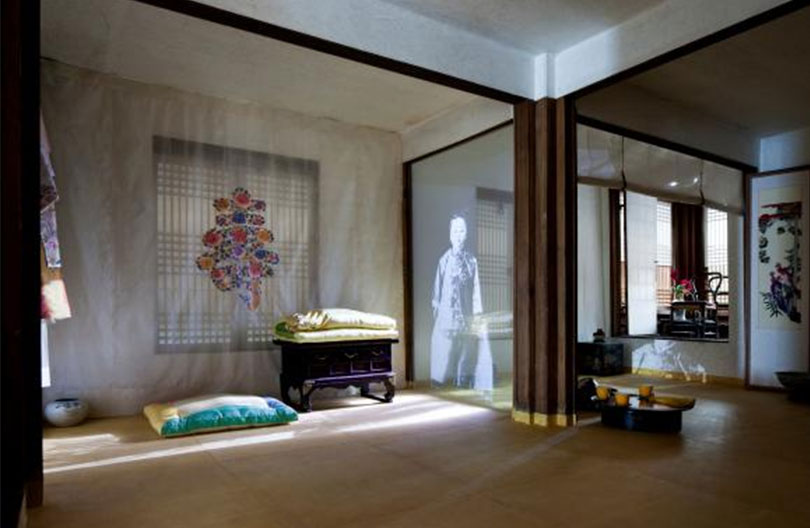 Kim Young Seok_Seogeodang, Better Days_National Museum of Contemporary Art Korea Commission, 2012
Kim Young Seok_Seogeodang, Better Days_National Museum of Contemporary Art Korea Commission, 2012
Special History of Deoksugung
Deoksugung’s history originally began with another name, Jeongneungdong Haenggung. Deoksugung primarily began its history as a palace with the name of Jeongneundong Haenggung. It was already after the Gyungbokgung and the Changdeokgung were burnt out when the King Sunjo returned from the refuge in Euiju due to the Japanese invasion in 1952. King Sunjo dwelt temporarily at this place in 1593, which had been owned by Wolsandaegun (Prince Wolsan), the elder brother of King Seongjong. Seogeodang area was the place, and King Sunjo passed away here 15 years later. After the enthronement of Gwanghaegun (King Gwanghae), the palace was renamed as Gyungwoongung, of which the short history was soon eliminated right after the enthronement of King Injo and most of the buildings were given back as private possessions.
Since then, the Gyungwoongung had remained only as a ‘memory’ of the endurance of national crisis during the Japanese Invasion of Chosun in 1592. It was during King Gojong’s reign when the Gyungwoongung made a meteoric rise on the surface of the history. After the Queen Min’s assassination inside of the Gyungbokgung in 1895, King Gojong had to refuge at the Russian legation in the following year. At this time, King Gojong already contrive a grand scheme to reconstruct the Gyungwoongung. Until his moving in February of 1897, King Gojong built many buildings in the Gyungwoongung fast. Then immediately he entitled the late Queen Min as the Empress Myeonsung, served a commemorative rites at Wongudan, and accorded her a state funeral after announcing the Daehan Empire. King Gojong’s ‘Gyungwoongung Project’ seemed to have run toward the zenith when the feast for the celebration of the king’s 51th birthday as well as the 40th anniversary of enthronement, when the procession formed a long line until the forty-year-memorial monument in front of the Kyobo Bookstore of today, and when the Joongwhajeon was completely built in two stories and presented its magnificent appearance in 1902. Based on the Gyungwoongung for eight years from 1897 to 1904, Gojong’s persistent ambition had achieved fruits actually in diverse fields to realize the true desire of Chosun to get independent from the pressure of Japanese Imperialism.
Being the dream and hope of King Gojong and the symbol of the Daehan Empire, the Gyungwoongung was completely burnt, however, in the April of 1904. After this suspicious conflagration during the war between Russia and Japan, the Protectorate Treaty between Korea and Japan was concluded at the Jungmyungjeon in 1905. King Gojong’s effort to claim the injustice of the Treaty was frustrated due to the compulsive abdication of him by the Japanese Imperialism in 1907. From then, King Gojong had begun to be called as Yitaewang (King the Yis) and the Gyungwoongung was renamed as Deoksugung and scaled down by remodelling until King Gojong’s mysterious death at Hamnyungjeon in 1919. (King Gojong’s poisoning is an established theory by the historians in the academic fields, it is still not recognized widely by the public.) Right after King Gojong’s death, the Deoksugung became the possession of Japanese Imperial government general and that the royal palace was destructed according to the plan to make it a park during the 1930s. Whereas about 170 buildings with no empty space, during its glorious time, filled the every spot inside of the palace which was three times lager than now, there are only 15 buildings remained at present days. This has been the history of the Deoksugung, and the origin of the vestige remained until today.
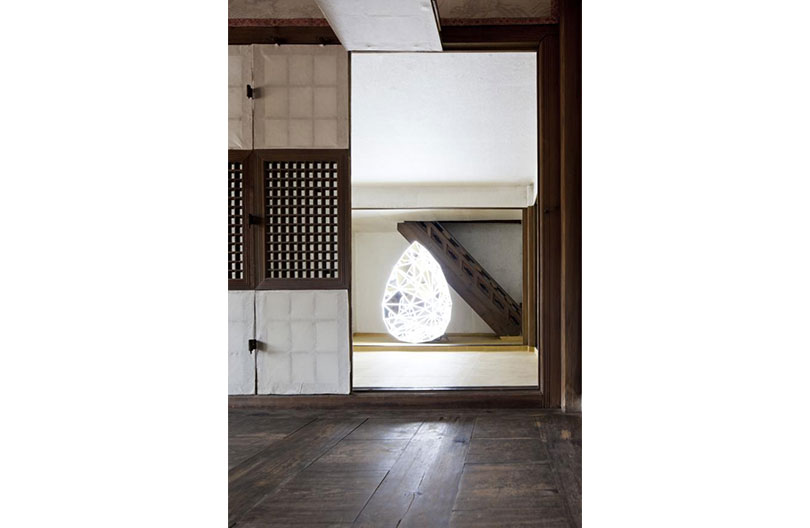 Yeesookyung_Seogeodang, Tear Drop_National Museum of Contemporary Art Korea Commission, 2012
Yeesookyung_Seogeodang, Tear Drop_National Museum of Contemporary Art Korea Commission, 2012
《Deoksugung Project》
When looking deeply into Korea’s history, most stories are found to be too much ponderous and sorrowful. Although the palace now positions itself inner part of our daily life like a park today, it still stands in front of us with a formidable heaviness of its history. Besides, the more we try to reconstruct its history precisely, the more we become to encounter an odd experience of unsolved mystery instead of finding historical facts clear. It might be basically the historians’ task to unveil such questions which are sometimes trivial but on other occasions gigantic.
But can artists of our time utter in somewhat different way about this gigantic legacy in front of us? Aren’t they perhaps able to lead us to make conversations with our past by touching some parts that historians cannot? Even though unable to reveal the truth, wouldn’t it be a meaningful approach to it so as to make us realize that “we do not know it” in contemplation of the historical facts like unfitted puzzle? These thoughts provided me the pure starting point of this project.
From diverse fields, the artists joined in this project to understand and reinterpret such contexts: video and installation artists or sculptors like Do Ho Suh, Yeesookyung, Chung Seoyoung, Lyu Jaeha, Choi Sunghoon+Park Sunmin, and designers such as Kim Young Seok, a Hanbok (traditional Korean costume) designer. Moreover, a furniture designer Ha Jihoon, Sung Kiwan as a musician, Jung Youngdoo as a dancer, Ryu Hankil as a sound artist, and Lim Hangtaek as a traditional ceramic master participated in the project. 9 projects are organized in total at six palaces and backyards: Hamnyeongjeon, Deokhongjeon, Junghwajeon, Junghwajeon Haenggak, Seogeodang, and Jeonggwanheon. In the meantime, the outputs of outdoor projects, archives, and unrealized ideas were exhibited inside of the Deoksugung Museum.
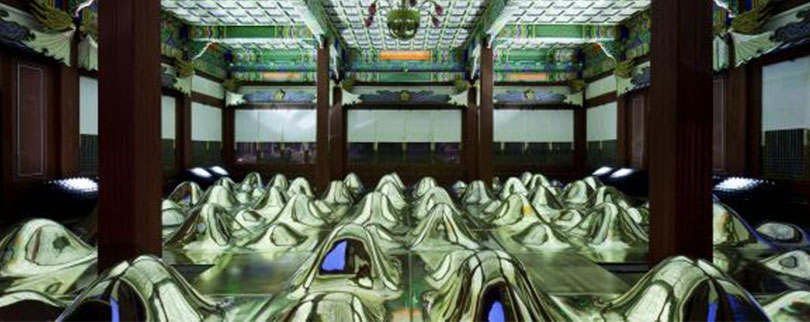 Ha Jihoon_Deokhongjeon, Jari_National Museum of Contemporary Art Korea Commission, 2012
Ha Jihoon_Deokhongjeon, Jari_National Museum of Contemporary Art Korea Commission, 2012
All these works sometimes make historical questions the starting point of their inspirations, and sometimes guide viewers to see the products of the past in a new light from their very contemporary aspects. Some works were absorbed into the story of Inmok Daebi, Dukhyeongju, King Gojong, while others performed in contemporary manners with noises made by various sundries at the small backyards inside of the palace. When the stories from the imperial novels are heard with an announcer’s voice, the flamboyant Dancheong (traditional multicolored paintwork on wooden buildings) and media mapping fully covering on the surface of roofing tiles wake up the night of the Deoksugung.
Walking around every spot of the palace in which the past and the present time are mysteriously harmonized, we could spread more abundant imaginations out although many of our curiosities about the Deoksugung would remain unsolved. It also would be enough if we could become to open our eyes with the palace’s beauty ever unknown before, and if we could acquire a small wisdom of daily life through the reflection on the history. I can only wish that these sorts of efforts of contemporary artists would be the attempts to chase the value of more fundamental and invisible legacy instead of simply appropriating the traditional motifs or imitating their appearances.
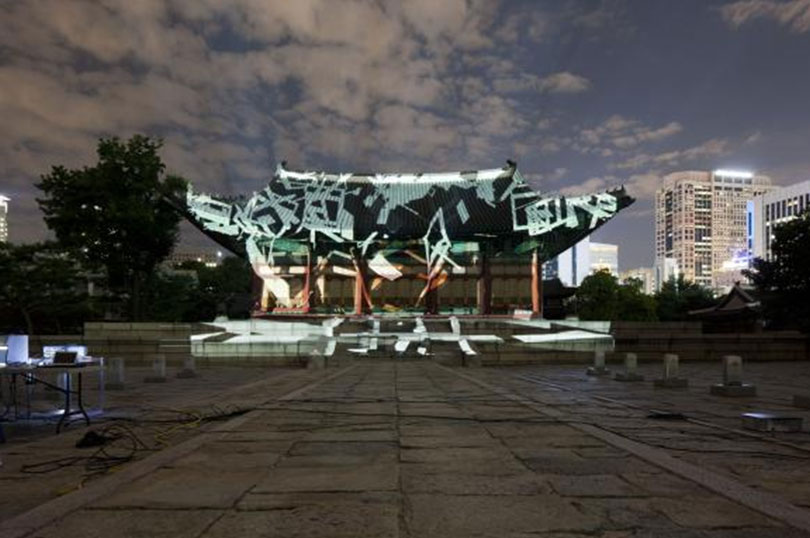 Lyu Jaeha_Junghwajeon, Time_National Museum of Contemporary Art Korea Commission, 2012
Lyu Jaeha_Junghwajeon, Time_National Museum of Contemporary Art Korea Commission, 2012
About Legacy
What is legacy? It is all remained to us already before our birth and our choice. As a sort of ‘Karma,’ it can be either a debt or an asset. We can neither forget about its existence nor escape completely from it as if our births and beings are inevitable faiths. Rather, it would be better for us to accept the sense of its considerable ‘weight’ burdened to us and endure it. For, we are responding in any way to its existence even when trying to avoid it.
The weight of Korea’s legacy is specially considerable. In particular, the modern history of Korea is so tragic that we could consider it as a failure in many parts. But could such tragic history not provide more affluent ‘cultural assets’ to us today? At least, we can may speak out our history more honorably than other countries which have yet to bear the history of invasions by imperialism. In this respect, 《Deoksugung Project》 is a daring dedication that Korean contemporary artists offer to the palace’s history of sufferings and pains, and to those who lived in that sorrowful history. In other words, the project is a work to ‘response’ to the special energy of the Deoksugung Palace that we cannot disobey, to pay our homage, and to introspect our presence.
* This writing is the abbreviation of an article from 《Deoksugung Project》 catalogue.
* To see individual descriptions of the whole art works in detail, please visit the official website of The National Museum of Contemporary Art: www.moca.go.kr
Deoksugung Project viewed by 6 people
《Deoksugung Project》: To get over the Sadness to Pieces _ Sun Seunghye(Professor, Sungkyunkwan University)
《Deoksugung Project》: Reconciliation between Crash of Time and Scenography _ Kim Namsoo(Choreography Critic)
The Calling of Memory _ Jung Hyun(Art Critic, Independent Curator)
The inside of time in the eternal rest _ Gu Na-yeon(Art Critic)
I want to go further back in time _ Kim, So-yeon(Theater critic)

Kim Inhye / Curator, National Museum of Contemporary Art Korea
Born in 1974. Kim had studied art history at Seoul National University from 1992, and earned a PhD degree with her dissertation, Lu Xun’s Woodprint Movement: At the two poles of Art and Politics in 2012. She has worked as a curator of the National Museum of Contemporary Art since 2002, and organized exhibitions related with Asian modern and contemporary art such as Asian Cubism(2005), Asian Realism(2010), Tell Me Tell Me: Contemporary Art of Korea and Australia, 1976-2011(2011), and so on.

